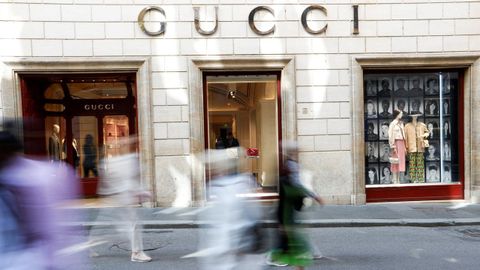
Author: CASILLI ROWING | Reuters
After reaching a record 1.4 trillion euros in 2022, experts predict that it will continue to expand until at least 2030.
He luxury market He doesn’t understand crises, or at least not the ones the average citizen goes through. It suffered the brunt of the spring 2020 pandemic shutdown like all industries and economies in the world, although it was one of the few to recover in a short period of time. Despite a 26% decrease in sales, the high-end industry improved by 12% in 2021 to enter 1.15 trillion euros, and in 2022 achieved an additional growth of 20% to add 1.38 trillion -353,000 million in goods and personal items —a record number that exceeded their pre-covid accounts. Although the best is yet to come, advise Claudia D’Arpizio and Federica Levato, partners at the global consulting firm Bain & Company. “It seems that this market is better prepared for a possible global economic crisis like the one in 2008-2009,” they say. In fact, they expect it to continue to “expand, at least until 2030.” Other experts abound, such as Josep María Catal, professor of economics and business at the UOC, for whom the sector could “reach growth of up to 60% compared to 2022.”
And along the way, along with China — where 180 million luxury consumers appeared between 2014 and 2022 —, “the Persian Gulf, Southeast Asia and India have gained importance,” says Xandra Falcó, president of Círculo Fortuny — the top reference association in Spain—, which adds two caveats: India’s luxury consumer spending will nearly quadruple from 2022 to 2030, and the country already has the world’s fourth-most millionaires. “In order to attract these markets,” he points out, “Spain must direct the spending of long-distance visitors to new subsectors.”
In 2022, it received six million high-impact tourists (6.5% more) who generated business of 20,000 million euros, almost 1.9% of GDP. Bain & Company does not forget the developing African economies either. According to his latest study, the potential increase of high-end consumers in this decade would be ten million.
(5% more), compared to 25 million among Asians (15% more) and 40 million among those of Indian origin (20% more). Although the recovery of China, which increased customers for these types of products and services by 40% from 2014 to 2022, will be a key factor after last year this selected market decreased in the Great Dragon for the first time in the past lustrum. It did so by 10% due to restrictions — it did not reopen its borders until last January after 33 months of severe restrictions — and falling consumer confidence. Hardest hit: luxury watches and clothing, down 25%.
Source: La Vozde Galicia
I am Jason Root, author with 24 Instant News. I specialize in the Economy section, and have been writing for this sector for the past three years. My work focuses on the latest economic developments around the world and how these developments impact businesses and people’s lives. I also write about current trends in economics, business strategies and investments.







